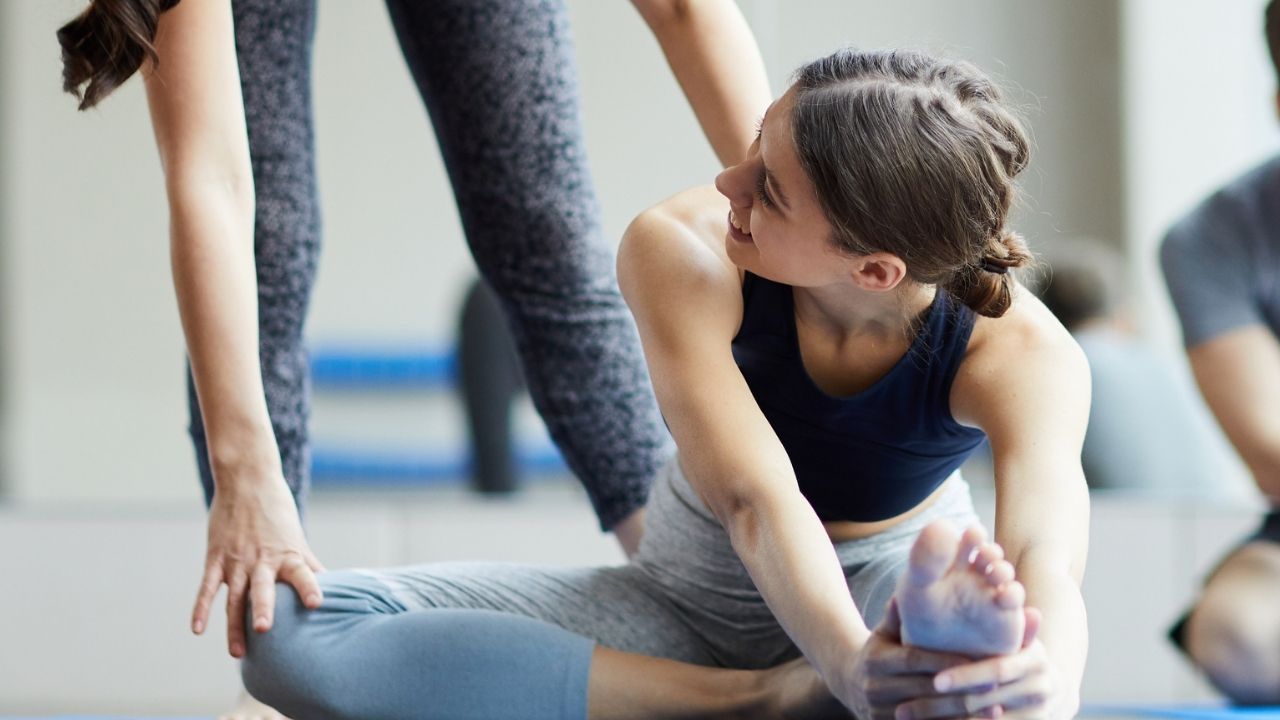Cracking the Pilates Code: Why Cueing Isn't The Only Key
Oct 24, 2024
Ready to dive into the not-so-secret world of Pilates cueing? Let's chat about something that might just flip the script on how you approach teaching and practicing Pilates.
So, you're in the midst of your Pilates teaching journey, navigating a sea of new terms — and trying to figure out the perfect cues for every move. It can feel a lot like trying to learn a whole new language.
But here's the twist: what if the real challenge isn't in the words you use?
Teaching Pilates is a science and an art, and it involves more than just throwing around fancy, flowery terminology.
Let's consider a quick scenario: you're guiding a client through an advanced exercise. Let’s say they’re trying to nail Magician on the Trapeze Table.
And this client isn’t a newbie. You’ve been working with her for months and she’s actually really good at following your cues.
So you’re BOTH confused about why she just can’t seem to get this one down, no matter how you cue her.
You start to wonder if maybe you’re doing something wrong. And she’s feeling terrible because no matter how hard she tries to follow your cueing, it’s just not happening.
But the problem isn’t your cueing . . . nor her inability to follow directions.
It might be that she never mastered the fundamental concept of hip dissociation (the ability to move the legs independently from the torso).
Without that fundamental movement skill in place, no amount of cueing magic will make the exercise click for her.
Sometimes, it's not about the words; it's about programming.
To help your clients more fully, you need to be a bit of a Pilates programmer — strategically selecting exercises that lay the foundation for more advanced moves.
If a client struggles with a particular exercise, maybe it's not about her Pilates prowess but a gap in a foundational movement skill.
I know you’re aware that people use compensatory movement patterns if they lack a foundational movement skill. Sometimes it’s hard to detect those bad habits, especially in a group class where we are supposed to keep our eyes on several people at the same time.
Which brings me to the real gem in our treasure chest of knowledge: easy exercises.
Though often dismissed as basic, they really are the unsung heroes of Pilates. Unlike what some may think, they're not a waste of time. In fact, they're the crucial preparation for the Pilates challenges that lie ahead.
If you’ll allow me another metaphor, beginner exercises are like the rehearsal before the big show, programming your body with the movement skills needed for more complex routines.
To give you an example, I recently worked with a Pilates teacher who experienced painful hamstring cramps every single time she performed Single Leg Bridging.
The solution wasn't in figuring out which cues to use to help her. It was to revisit the more foundational movement skills of hip extension, knee flexion and trunk stability on the transverse plane.
It might seem frustrating to have to go back to the basics and spend weeks or months with not-so-fancy exercises. But the alternative is a cramp or similar bodily reaction giving you a hard NO during an attempt to progress your practice.
So the next time you find yourself drowning in cueing options and trying to figure out which one to use to help a client get over a hurdle, take a step back. Consider the programming puzzle.
Choose exercises that build the necessary movement skills, making cueing a breeze.
Let me give you some more examples:
To be able to do a Teaser, Roll Up, Roll Over, Short Spine or Gymnast, we need well-developed movement skills of lumbar spine flexion and hip flexion.
That doesn’t only mean strong abdominals and hip flexors (agonists and synergists), but also long antagonists (back and hip extensors).
Foundational exercises for lumbar flexion are: Pelvic Rocking, Bridging, C-curve, for example. By looking very closely for compensatory patterns in those foundational exercises (some call them PrePilates) and then progressively increasing the difficulty (adding resistance/load, lengthening levers, etc) we make those movement skills better and better, until the body is fully prepared for a hard-core exercise like the Roll Up or Magician.
Inside the Pilates Encyclopedia membership, we list progressions and cues for every movement skill from head to toe. Learn more about the membership at https://www.pilatesencyclopedia.com/join









